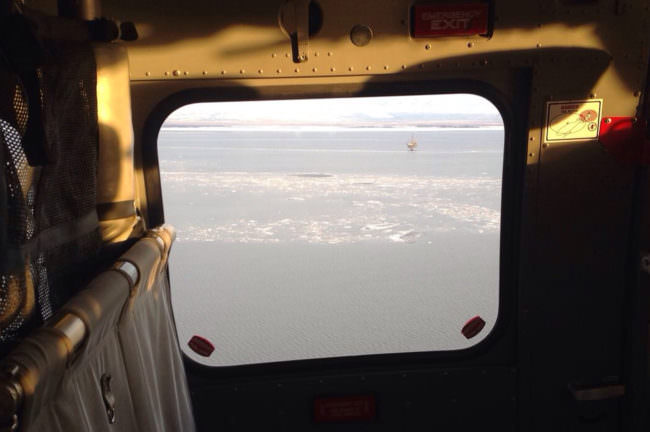
Ten gallons or less: that’s how much crude oil state regulators think leaked from a pipeline in Cook Inlet last weekend.
The pipeline’s owner, Hilcorp, has an even smaller estimate: three gallons. The oil company said that’s based on the number and size of the oil sheens spotted, plus the amount of oil recovered from the pipeline after the platform was shut down.
Kristin Ryan, director of the Alaska Department of Environmental Conservation’s Division of Spill Prevention and Response, said she’s fairly confident the final estimate won’t exceed 10 gallons. But Ryan added that pinning down exactly how much oil escaped won’t be easy.
“This is always a really hot point in any response, and unfortunately, it’s just not an exact science,” Ryan said. “It is hard to really quantify a release. One of the main factors we use is how much of the product was recovered, and in this situation we’ve not recovered any product.”
Ryan said the state will continue reviewing the available evidence. For example, they’re looking at Hilcorp’s records on how much oil was in the line, and how much oil the company was able to pump out of the line into a storage tank. Divers will also inspect the pipeline when dangerous ice conditions in Cook Inlet dissipate.
The final estimate for how much oil leaked into the Inlet will factor into how the state penalizes Hilcorp. Ryan said the state has zero tolerance for oil spills so a fine is likely. But she also praised Hilcorp for how they handled the leak.
“This probably wasn’t a lot of oil, so that’s, to us, a success story,” Ryan said. “The response went correctly. The company did what it needed to do, and didn’t put anybody in harm’s way and was able to get rid of the oil before a larger release occurred.”
But Lois Epstein of the Wilderness Society said she’s skeptical of Hilcorp’s estimate that only three gallons of oil leaked into the Inlet. She noted the pipeline is 75 feet underwater, so some of the oil may not have risen to the surface. Epstein is calling for Hilcorp to publicly release the data they’re using to calculate how much oil leaked.
“We need to know not just the initial estimate, which I think sounds suspiciously low, but we need to know what are the assumptions behind it and come to some sort of technical consensus of what the actual amount is,” Epstein said.
The Alaska Department of Environmental Conservation expects to produce a final estimate in a couple of weeks.
Elizabeth Harball is a reporter with Alaska's Energy Desk, covering Alaska’s oil and gas industry and environmental policy. She is a contributor to the Energy Desk’s Midnight Oil podcast series. Before moving to Alaska in 2016, Harball worked at E&E News in Washington, D.C., where she covered federal and state climate change policy. Originally from Kalispell, Montana, Harball is a graduate of Columbia University Graduate School of Journalism.




